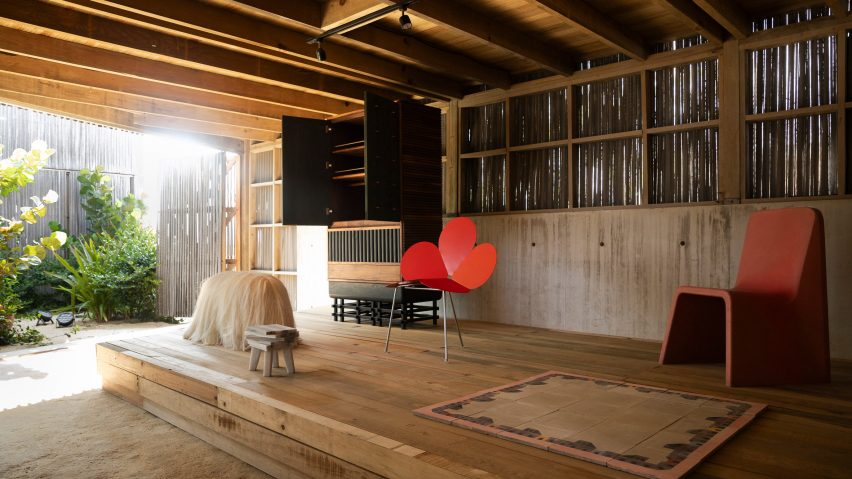
Works by Fernando Laposse and others showcased in beachside Mexican pavilion
Works by Mexican designers Fernando Laposse and Claudina Flores were among those shown in a remote seaside house near Puerto Escondido, Mexico, during Mexico Design Fair.
Dozens of works were placed throughout the house, called Casa Naila, which was designed by Mexican architect Alfonso Quiñones – who used techniques gleaned from his work with Japanese architect Tadao Ando on the nearby Casa Wabi arts centre.
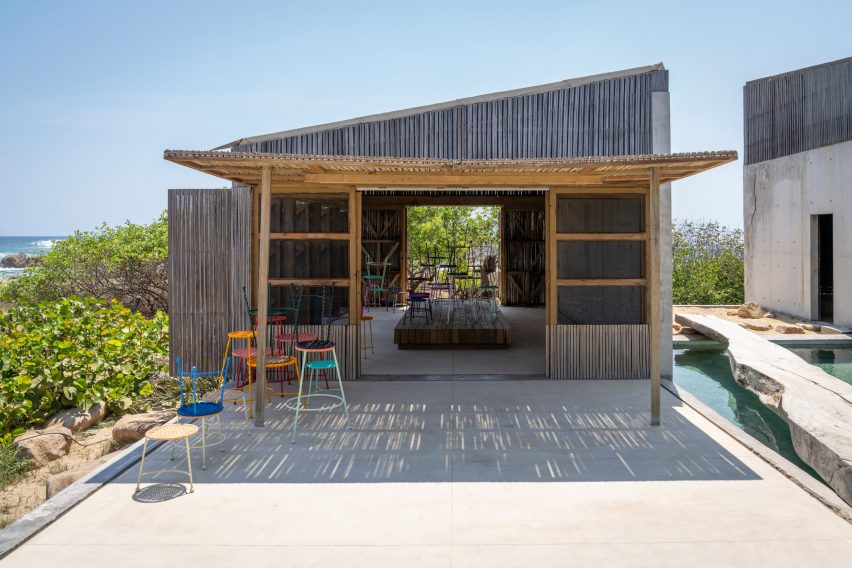
Casa Naila's concrete foundations, wooden structure and thatched walls and ceilings were at risk because of the erosion, so their was turned into a pavilion and used for years as a location for the invite-only fair.
According to the fair, the purpose of the exhibition was to execute a "long-term vision that foresees better conditions for the design disciplines in the country through critical dialogue, production and quality exhibition contents".
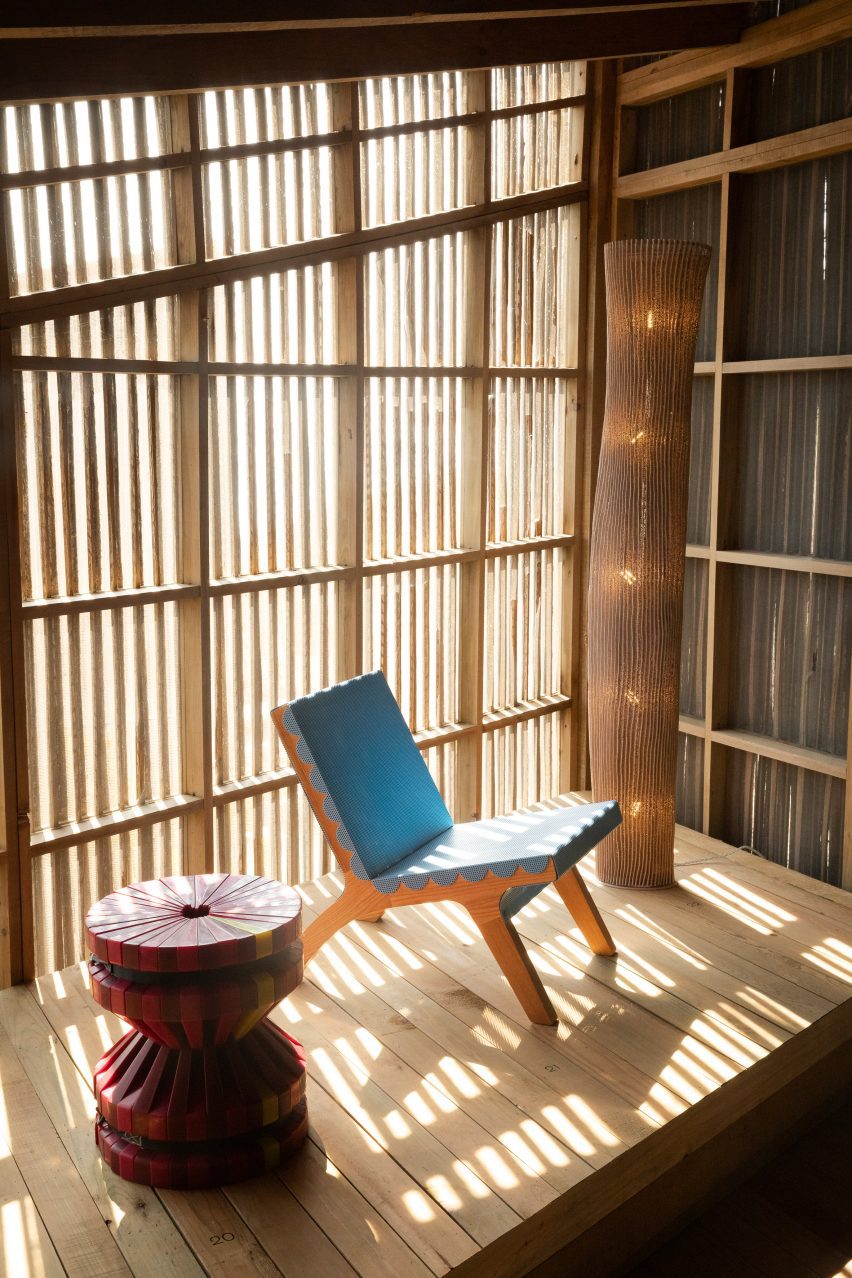
Arranged throughout the different pavilions of Casa Naila were furniture and decor objects.
As visitors entered the structure there was an arrangement of colourful stools by Oaxaca City-based designer Jaime Levin, with sculptural legs, woven nylon tops and multiple seats on some of the stools.
Directly across, in the kitchen area, was an arrangement of glassware by Mexican company Xauixe – noted for its use of recycled glass in its products and recycled cooking oil used to heat its ovens.
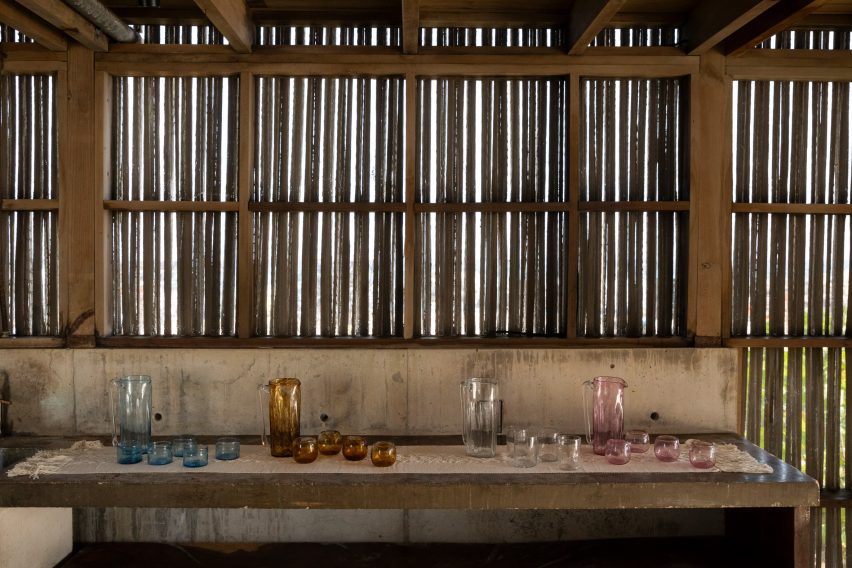
The other furniture installations filled the ground and second levels of the other two pavilions.
These included works by Mexico City and London-based designer Laposse, who uses materials like agave fibres to create material with applications for rural communities. His works included the small, white and "hairy" Pup bench and wall panels with marquetry made from corn husks.
Laposse was named Designer of the Year award from the fair.
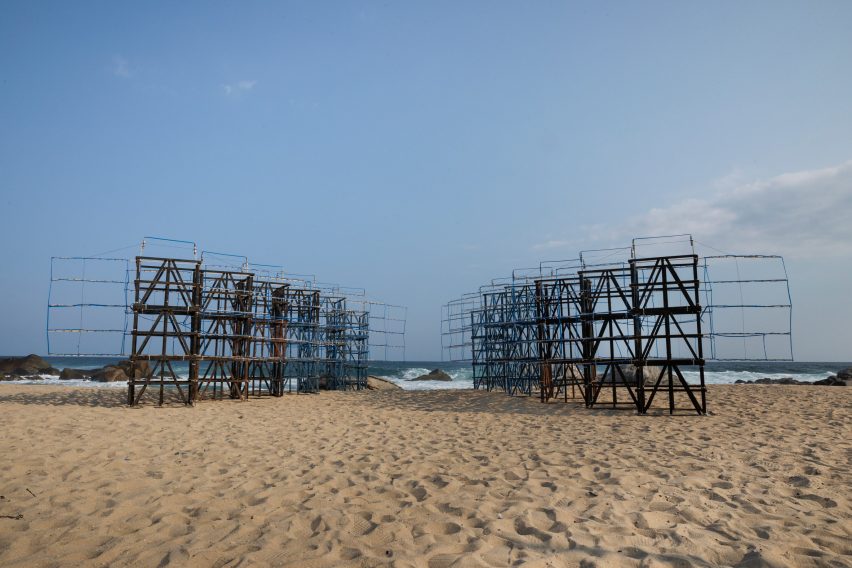
Arranged in tandem with Laposse's pieces were intricately constructed cabinets by Guadalajara-based designer Claudina Flores, who recently featured in our round-up of design studios in Guadalajara.
The show also included a colourful set of outdoor metal furniture by César Ponce and Carlos Torre Hütt, wooden chairs draped with plush leather cushions by Brooklyn studio Prime Project, as well as floor rugs by Indian firm Odabashian with designs by American designer Little Wing Lee and Argentinian Pilar Zeta.
On the beach was a spindly structure by artist and producer David Sánchez, which became a pyrotechnic installation at the end of the one-day showcase.
Many of the guests and designers were housed in Hotel Escondido, an hour's drive north from the fair's location.
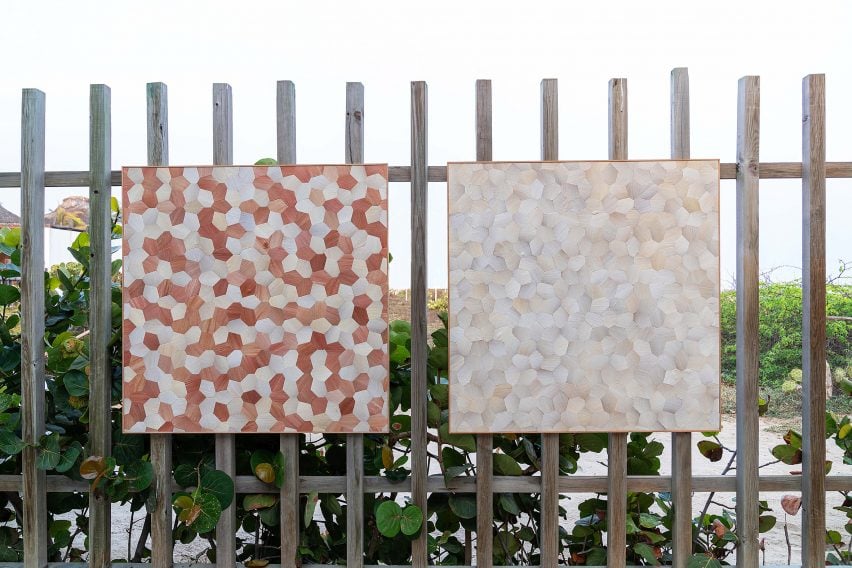
Select programming took place in the architecturally significant homes around Hotel Escondido – including the temple-like Casa Monte by Carlos Matos.
At Casa Malandra, a beachside home designed by Taller Alberto Calleja, visitors were treated to traditional tamales made in a massive basalt oven designed by artist Julio Martinez Barnetche.
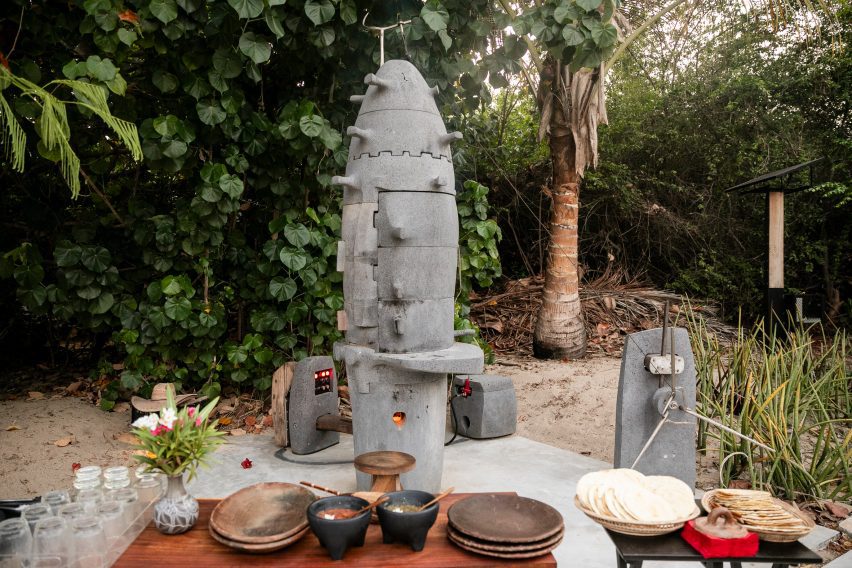
While the fair showcased a wide array of designers, some of the participants commented on the remoteness of the venues, and the invite-only status of the guests meant that the participants were limited but that the visitors did become tight-knit as the programming went on.
Other small-format design fairs in Latin America included a showcase in a monument in Santo Domingo, Dominican Republic organised by Galerie Philia last year.
Photography by Gerardo Maldonado unless otherwise stated.
Mexico Design Fair took place from 24 to 26 May in Puerto Escondido. For more fairs, exhibitions and talks in architecture and design visit the Dezeen Events Guide.